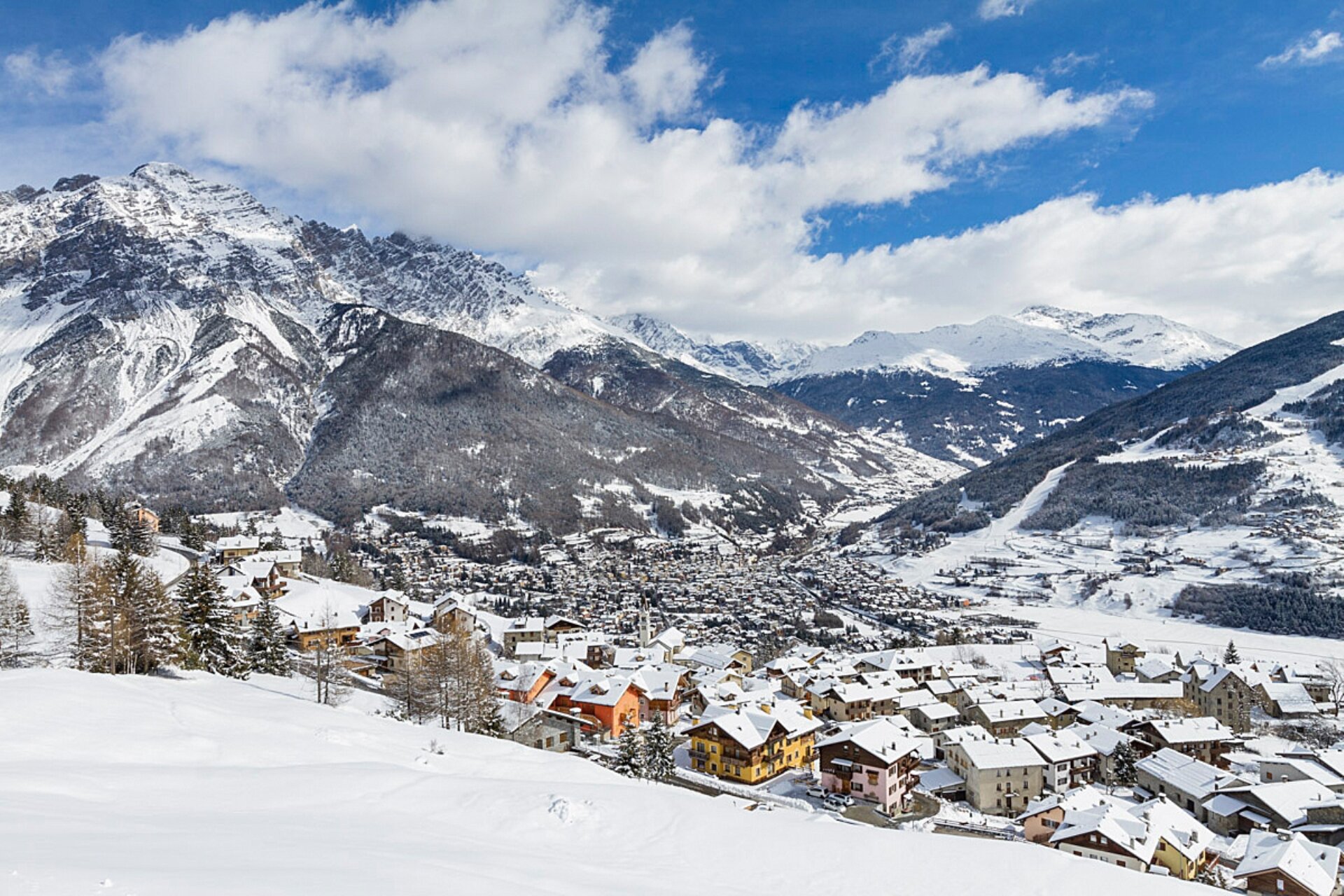Valdidentro, near Bormio, is full of interesting, unique places to visit. These are five of our favourites.
The Cancano lakes
Once you arrive at the top of the winding road up to Cancano (21 bends in total, as any cyclist will tell you), the scenery opens out into one of the largest valleys in the Stelvio National Park, home to two hydroelectric reservoirs: Lake San Giacomo and the more recent Lake Cancano.
Circling the lakes are two fairly flat gravel roads popular with walkers and ideal for family bike rides (you can rent bikes nearby).
If hiking is more your thing, from here you can explore nearby valleys like Val Trela, Valle del Gallo, Val Mora or Val Alpisella, the source of the River Adda.
The Fraele Towers
Built around 1391, the Fraele Towers were part of the system of defences around what was then the county of Bormio, watching over the ancient mule track that took Valtellinese wine over the Alps and brought Austrian salt in the opposite direction.
Enjoy the panoramic views over Bormio and imagine the Medieval guards who once monitored the flow of goods and kept lookout for enemy troops.
Val Viola
This wide sunny valley is ideal for hiking, mountain biking and e-biking.
The trail leads through forests and Alpine pastures to Lake Viola. If you've still got the energy after lunch at a refuge, continue towards the Viola Pass and into Val di Campo (aka Val Viola Poschiavina) in Switzerland, until you reach the crystalline waters of Lake Saoseo.
Thermal springs
Valdidentro is home to the nine hot springs in the Bormio area.
The thermal waters spring from deep within Mount Reit at a temperature of between 36 and 41° C, depending on the time of year. These waters feed the area's thermal spas, including QC Terme Bagni Vecchi and Bagni Nuovi in Valdidentro.
The springs each have evocative names: Nibelunghi, Ostrogoti, Arciduchessa, Zampillo dei Bimbi, Cassiodora, S. Carlo, S. Martino, Cinglaccia and the famous Pliniana.
Pedenosso church
This picturesque Alpine church perched on the mountainside boasts some fascinating frescoes and thick walls that indicate it was once a fortress. The location, colonnade and embrasures also suggest this was originally a fortress church. Mentioned for the first time in 1316, in the 17th century it sheltered soldiers and horses during the religious wars.
In 1685, the church assumed its current form. The tower became a bell tower, and the portico with a fresco depicting the Stations of the Cross became a cemetery. The side altars of the Holy Rosary and the Sacred Heart were also opened.
Inside, the frescoes in the presbytery by Tyrolean artist Johann Georg Telser recount the lives of the saints the church is named after, St. Martin and St. Urban.

